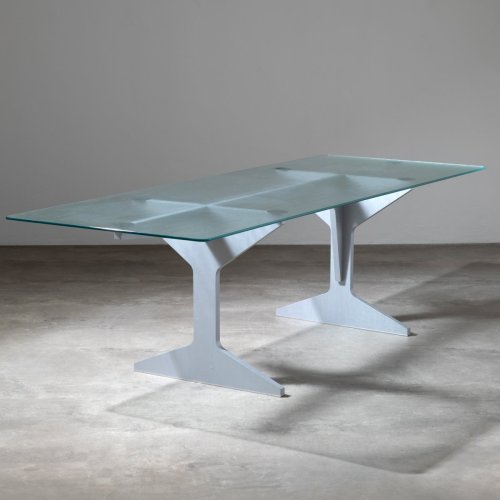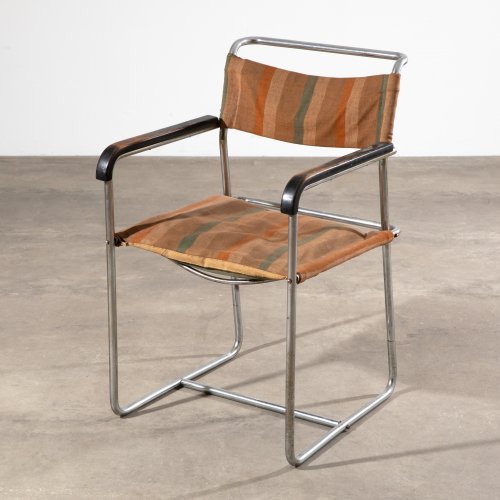For the Haus am Horn, which was built for the Bauhaus exhibition in Weimar, Marcel Breuer designed and built the furniture for the living room and the ladies' bedroom, such as the dressing table, which was his examination piece concluding his apprenticeship. After the journeyman’s examination he spent a few months in Paris in 1924, where he worked at an architectural office. In the following year, 1925, he returned to the Bauhaus, which moved to Dessau in April. Breuer became head of the newly established furniture workshop and devoted himself to the development of tubular steel furniture. Among the most spectacular objects of the Bauhaus was the tubular steel chair B3, which was presented to a wider public in 1926 together with other developed models in Dessau. From 1962, the company Gavina made this chair famous under the name, Wassily '. Breuer explained the choice of tubular stell regarding its useful properties. It was light, inexpensive, dismountable and hygienic. Tublular steel furniture became the symbol of radical modernity and new living. The development and the production of the prototypes took place in cooperation with the Junkers factories, which had previously produced corpus furniture made of sheet metal and duralumin for aircraft furniture. In his first models, Breuer had bent the material and then welded it. Later he abandoned seam-welding in favor of bolting. In 1927, Marcel Breuer founded the company Standard-Möbel, which was to produce tubular steel furniture. Thonet took over production in 1928/29.
In 1928 Marcel Breuer left the Bauhaus with Walter Gropius. Together they started an architectural office in Berlin. It was not until 1932 that he built his first building - the Villa Harnischmacher in Wiesbaden. In 1935 he moved to London where he worked with F.R.S. Yorker. Among his buildings is the Gane exhibition pavilion in Bristol. In 1937 Breuer went to the United States, where he held lectures at the School of Design at Harvard University. Together with Walter Gropius he realized architectural projects. In 1941 he started his own business and 1946 moved his office to New York. In the 1950s and 1960s, Marcel Breuer was one of the internationally acclaimed and successful architects.










